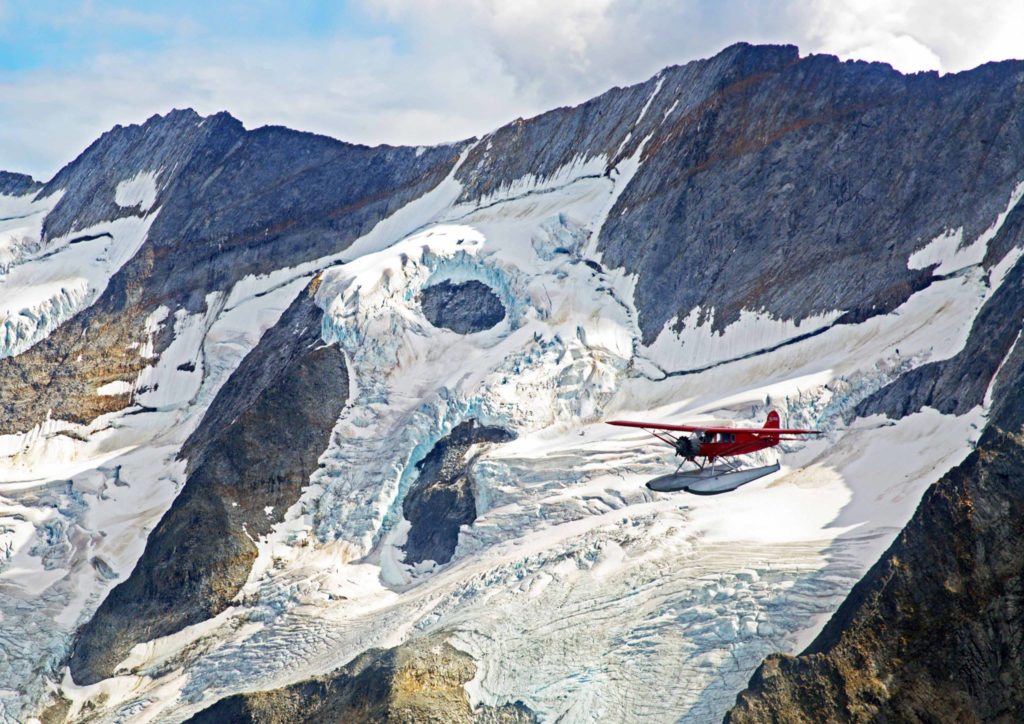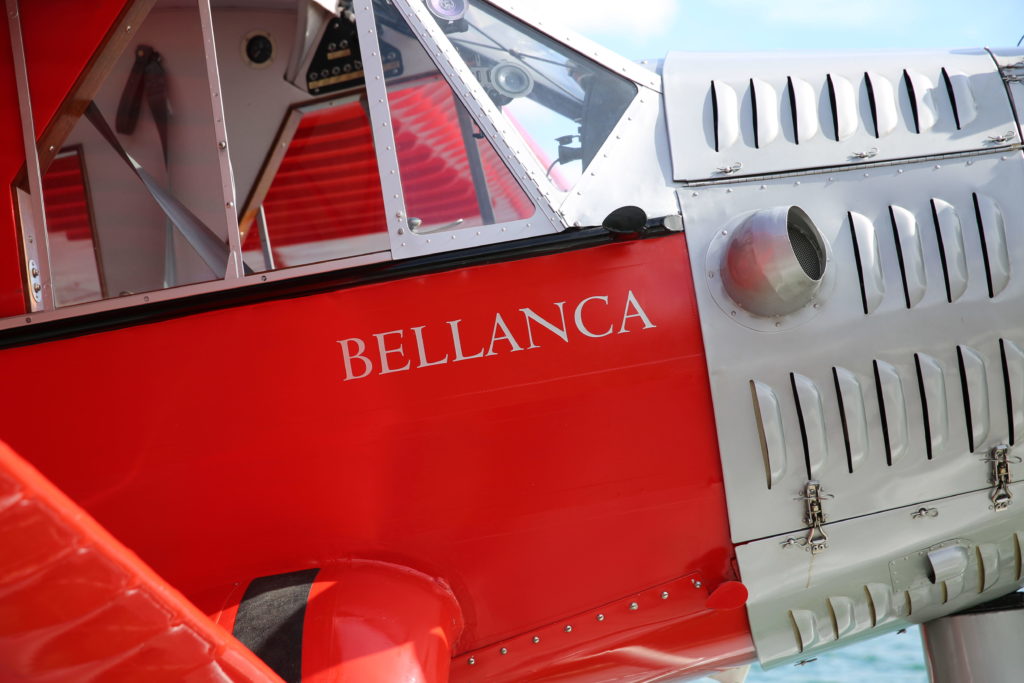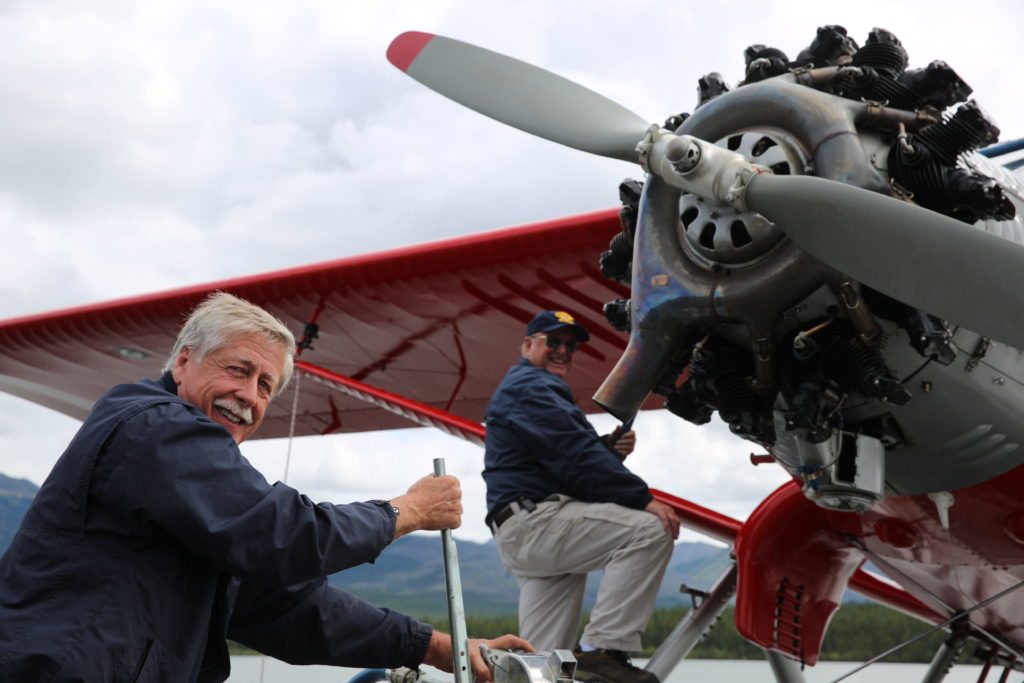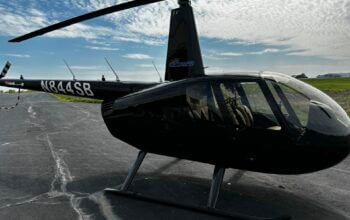Estimated reading time 10 minutes, 53 seconds.
Imagine being a bush pilot in the 1920s. Headed north, you experience the piercing cold of subarctic Canada, the endless dark reaching out and engulfing everything in sight. You have nothing to depend on but your cockpit instruments, little radio contact and a general idea of the surrounding area. It’s nerve-wracking to consider; a near-blind flight in one of the most remote areas of the country, yet you have to keep going. You’ve been contracted to fly this route to deliver mail to the northern communities.

This scenario would be challenging enough in a modern aircraft — but nearly unthinkable in a vintage bush plane like the Bellanca CH-300 Pacemaker.
A six-seat utility aircraft built by the Bellanca Aircraft Corporation in the late 1920s to early ’30s, the Pacemaker was instrumental in opening a channel to northern communities in Canada, where some of the bravest pilots were tasked with hauling mail, supplies and more, to and fro.
It’s these types of pilots, and the aircraft they flew, that have inspired the town of Norman Wells, N.W.T., to host a weekend fly-in called “Touch down in the ’20s!”
From July 5 to 7, Norman Wells is inviting any and all aviation lovers to fly into the remote town on the banks of the Mackenzie River and travel back in time to the Roaring ’20s.
The weekend involves a poker rally meant to re-trace parts of the historic northern mail run, a Roaring ’20s prohibition dinner and gala — where guests are invited to dress up like 1920s bush pilots, flapper girls and so on — and rides in the refurbished Bellanca Pacemaker owned by town resident Warren Wright, aviation buff and founder of North-Wright Airways.
“This is our first year [doing the fly-in],” said Jana Wright, Warren’s daughter and one of the event organizers. “We did the 20’s theme because the Bellanca aircraft was built in 1929… [Warren] got the Bellanca refurbished last year. Last summer he [had] it flown up from the States… so we went with the [theme] 90 years of the Bellanca.”
Wright has had a deep-rooted interest in the area’s aviation history since arriving over 40 years ago. After acquiring a job with Nahanni Air Services as a pilot, he flew the area for about 12 years with the company. After the owners of Nahanni decided to retire from aviation, Wright took over the operation, re-named it North-Wright Airways, and has called the North his home ever since. It comes as no surprise that he was enamoured by the area’s rich aviation history, which includes the Bellanca Pacemaker and its pilots.
“I came across a Bellanca just by accident on the Internet once,” said Wright. “I tried for that one but it went to Hawaii. It had been flown down there and was one of the first airplanes Hawaiian Airlines operated. I missed it, but then this other one, I didn’t think there were any more and one turned up… I’m doing inspections right now, getting it ready for the fly-in.”
The Bellanca was the aircraft of choice for the bush pilots who braved the North back before there was express mail, or any real outposts for that matter.
This includes pilots like Wilfrid “Wop” May, a legend in Canadian aviation history and an Alberta native who was contracted by Imperial Oil to ferry an aircraft to stake its oil fields along the Mackenzie River — an area that would become known as Norman Wells. In 1929, May was awarded the contract for mail runs down the Mackenzie Valley.
To May, these kinds of flights may have seemed routine — the Canadian had flown in the First World War for the U.K.’s Royal Air Force. May’s name was made in the skies over France where he was chased by a red Fokker Dr.I after engaging with another aircraft in the Fokker’s unit. While pursuing May across the Somme River in combat, the German aircraft was shot down, leaving the pilot mortally wounded. That pilot was Manfred von Richthofen, also known as the Red Baron.
May was a novice pilot at the time and had decided to attack another novice pilot just outside of the initial engagement, who turned out to be the Red Baron’s cousin Wolfram von Richthofen. The Baron saw this, pursued May who avoided falling victim to the famed German pilot, and was mortally wounded during the chase.

May’s post-war career was no less spectacular. After his heroics in France, he turned his sights to the North.
“Imperial Oil brought two Junker Larsen J-13s up [to Norman Wells] from Edmonton, which were bought in the States,” said Wright. “Wop May was given a job by Imperial Oil to fly the Junker J-13s from the States and bring them to Edmonton, and supply crews to take them further north, which he did… then later May started flying into the north more, in the… late 20s and he was awarded the mail contract up here… so he had to bring on some extra Bellancas, he bought the Bellanca CH-300 Pacemaker.”
After Imperial’s contract, May was the go-to bush pilot for anything that needed to get to the banks of the Mackenzie River and back again. He was so well versed and regarded as a northern flyer, he became the first pilot to ever help the RCMP in their pursuit of a suspect.
“It was the RCMP … [looking for] a trapper who was taking other people’s traps and throwing them in the bush. The RCMP tracked this guy by sleigh but he put his snowshoes on backwards to try and elude them,” explained Wright. “So they brought in Wop May with an airplane to track him down from the air because they were having a hard time. It took over a month … to catch him, they finally got him, tracked him down and they ended up shooting him.”
Now known as the “Hunt for the Mad Trapper,” May assisted the RCMP in tracking down Albert Johnson, a notorious criminal who was accused of illegally hunting animals for their meat and fur. After Johnson was confronted and a firefight broke out, May touched down and hauled an injured RCMP officer 201 kilometres to a doctor, where he was credited with saving the officer’s life. The incident was enough to inspire a movie, where a fictionalized version of May was portrayed by Charles Bronson.
These accounts of heroism, from May and other northern pilots of the time, are what inspired “Touch down in the ’20s!”
Norman Wells is as remote a town as you’ll find, only accessible by air or river for 10 months of the year, with an ice highway that forms over the Mackenzie River for six to eight weeks of the year.
“Everyone flies in and out of the town,” said Jana Wright. With that, it’s no wonder Norman Wells is well equipped to host a weekend devoted to honouring bush pilots and their aircraft. “People can come in on floats. We have spaces at our float base and then we also have the airport.”
With plenty of places to house aircraft for the weekend, the town also has an array of accommodations for pilots and passengers.
“Well, we do have one hotel in Norman Wells,” explained Jana. “We have an old camp that we’re starting up, just a house, for people who’d like to stay there. We also have Canoe North with accommodations, which has their location right where the party’s at.”
With the RSVP cutoff date of June 21 fast approaching and spots filling up, Warren Wright ponders on whether the fly-in can become a regular event for Norman Wells.
“I’m surprised by the amount of people and interest in this thing,” he said. “So I wouldn’t be surprised if they want to do it, if not each year, than every second year or something like that.”

The event has certainly drummed up significant interest, with one RSVP looking to bring 10 aircraft to the small town, a fact that has shocked the northern aviator.
“There’s people coming; I’m surprised,” laughed Wright. “I didn’t think there would be this much interest, but it seems to be just the right year for it.”
For fly-in information or to RSVP, contact North-Wright Airways at info@north-wrightairways.com or call Jana Wright at (587) 225-2100.









I would so return my home town but find there is nothing left there for me have fun everyone sounds like a blast
Junker? No, Junkers…..